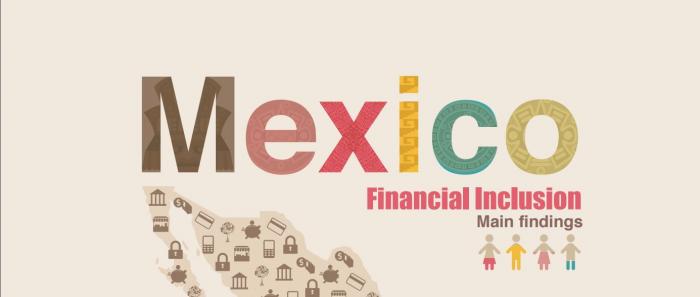When it comes to crafting smart financial inclusion policies and effective regulation, evidence and data are key. In Mexico, financial regulators have taken the lead. Since 2012, the Comisión Nacional Bancaria y de Valores (CNBV) and the Instituto Nacional de Estadística y Geografía (INEGI) have conducted two national surveys on financial inclusion, which have not only highlighted the importance of data, but how important regular data collection is to building a national financial inclusion strategy.
Developing national surveys and indicators is a massive effort that might at first seem expensive and time-consuming, but in Mexico this investment has paid off. The 2015 National Survey for Financial Inclusion (ENIF) has allowed the country’s financial regulators to more accurately assess the state of financial inclusion in Mexico, and provided important insights into policy needs and national demands. According to Maria Fernanda Trigo (CNBV), the survey captured crescent knowledge of mobile banking, financial education and consumer protection, and gathered information on topics not covered in the CNBV’s 2012 survey, such as level of satisfaction with customer service and the identification of former customers of the financial system.
The national survey showed that 68% of adults in Mexico have access to at least one financial product, compared to 56% in 2012. The same trend was observed in the tenure of the main financial services, with savings account ownership increasing from 36% to 44%. Smaller increases were seen in the possession of credit (27% to 29%) and insurance (22% to 25%), while retirement savings schemes saw a sharp increase from 28% to 41%.
Another interesting finding was the gender gap in financial inclusion. Nationally, women and men have similar access to accounts from formal financial institutions. However, women in rural areas have more accounts than men outnumbered them by 6 percentage points. Still, there is an important gap to address with retirement savings account schemes, as only 33% of Mexican women have access compared to 50% of men. A similar gap can be seen with insurance products, internet banking and mobile banking.
The survey revealed other challenges for Mexico’s financial regulators, too. More than half of the country’s adult population (56% or 42.6 million people) still do not have a savings account, and 31.6 million people have never had one. It is also interesting to note that while 33.6 million adults have access to a formal account, 22 million of them also use informal savings mechanisms.
Mexico’s financial infrastructure has seen impressive growth, with the survey reporting more usage of ATMs and correspondent agents Interestingly, the number of adults using bank branches dropped from 40% to 39%, but it is yet to be determined whether this decrease is due to the growth of the ATM network and correspondent agents. Usage of mobile banking has increased overall to 9.5%, although rural areas are lagging urban areas. Finally, the survey showed that individuals with a bank account do not tend to use mobile banking, primarily because they said they do not need it.
In terms of financial education, the survey showed that 66% of adults have received education about savings. Interestingly, parents and schools are the first and most important source of financial education in the country, and piggy banks are the main way people learn about saving money.
Another highlight of the survey was to what extent Mexicans use cash. Most people still rely on cash, with 92% of adults preferring to use cash for their purchases. Debit card and credit card usage both remain low, with survey respondents identifying routine, lack of trust and money management as the main reasons.
Special thanks to María Fernanda Trigo and Marco del Río from CNBV Mexico for providing data for this blog post.

